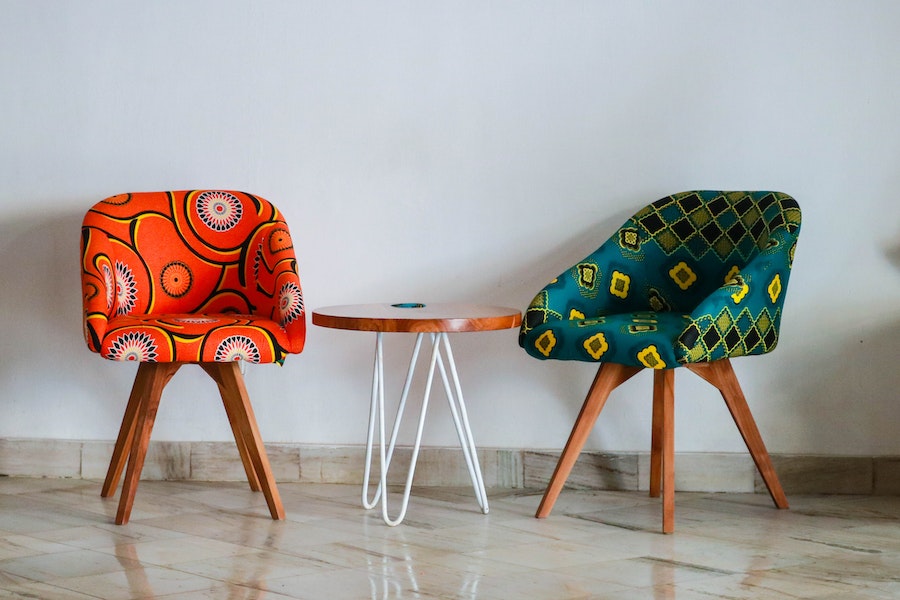Are you passionate about your hobby but not sure whether it could become a standalone business? Starting a side hustle is a great way to test an idea and make some cash while you do it.
Most of us have hobbies that we turn to as a way to socialise, get creative or manage stress. It could be painting, cooking, playing sports, upcycling furniture – the list is endless. But what if you could turn your talent into a lucrative venture and spend more time doing the thing you love?
Nowadays, more and more people are monetising their hobbies and launching their own cash-generating side hustle.
Over the years at The Pitch, we’ve seen dozens of side hustles that have become thriving startups. There are home cooks who have built successful catering businesses, cocktail fans with their own drinks brands and fashion lovers who have developed clothing rental apps.
In this guide, we’ll explore the pros and cons of monetising your hobby, some lucrative side hustle ideas and how to get started with your side hustle.
The pros and cons of monetising your hobby
Running a side hustle can be a rewarding experience, but there are also plenty of responsibilities that come along with it. If you’re weighing up whether it’s right for you, here are some pros and cons about turning your hobby into a side hustle.
Pros of starting up a side hustle
You’ll be doing something you love
As the famous saying goes, “find a job you enjoy doing and you will never have to work a day in your life”. Turning a hobby into a side hustle allows you to spend more time doing something you love – and make extra cash at the same time.
It’s flexible
As a side hustle owner, you’re your own boss. If you’re looking for a job that fits around other responsibilities (for example, you’re a stay-at-home parent), starting a side hustle is a brilliant way to dip your toe back into the world of work while still maintaining the flexibility you need.
It provides an additional income
Most side hustles will have some initial overheads, such as material costs, ecommerce fees or the cost of a premises to sell from (such as a rented room or a market stall). However, once you’re up and running, you should be able to rely on your side hustle as a useful source of extra income.
You can meet new people
The chance to meet new people and find new opportunities is one of the biggest benefits of starting a side hustle. It provides the chance to step outside of your comfort zone and meet people from all walks of life, whether it’s customers, suppliers, other business owners in the local area or even investors.
It’s less risky than going full time
Starting your new venture as a side hustle lets you explore your idea without having to plunge straight into the deep end.
This is helpful for two reasons. The first is that it gives you the freedom to test your idea without having to worry about whether you’re making enough money to pay your rent or mortgage. The second is that it allows you to see if it’s actually a path you want to pursue, or if it’s something you would rather keep as a hobby.

Starting a side hustle is a great way to test your business idea, meet new people and even get in front of investors. 📷: Entrepreneur and VC Ezechi Britton MBE judges The Pitch Final 2021
Cons of starting up a side hustle
Running a business requires commitment
While you may enjoy spending your free time immersed in your hobby, turning it into a business requires a new level of commitment.
If you’ve got customers waiting for orders or you’ve agreed to supply a local store by a certain date, you’ll be expected to deliver regardless of whether you’re in the mood to do so.
It can help to ask yourself about what kind of outputs you could commit to as part of your side hustle. Could you deliver at the drop of a hat? Is your hobby all about a long-term creative process? Is it important to work on your terms?
There’s no right or wrong answer, but thinking honestly about your capabilities and preferences can help you to decide what kind of side hustle you start (or whether you start one at all).
A side hustle can be time consuming
If you’re going to be running a side hustle on the side of a full-time job, you may quickly find yourself with little free time.
Most people running a side hustle alongside a job will work on their business in evenings or on weekends. If you love what you do and you’re ambitious about building it into a business, then it should feel worth the effort.
However, if your life is already jam-packed with other responsibilities, then it’s a good idea to think realistically about whether you’ve got time for a side hustle. The last thing you want is for your side hustle to feel overwhelming or have a negative impact on your mental health and wellbeing.
One option is to start small and offer your products or services at a limited capacity. This could involve only selling in your local area or to a small network of friends and family. Once you’re comfortable you can meet demand while still balancing other responsibilities, you can slowly build up your business.
You should also look for ways to save time and streamline processes where possible. Using accounting software like Sage Accounting, for example, will make it easier to manage your finances, so you’ve got more time to focus on the job in hand.
Seven ideas for lucrative side hustles
When you’re wrapped up working in your existing job, it can be hard to see how you could make money from a hobby. But if it’s something you’re really passionate about and you’ve received lots of positive feedback over the years, maybe it’s time to give it a shot.
Here are some ideas of side hustles that can be lucrative, and how to start them.
1. Set up a food business
If your favourite way to wind down at the end of a busy day is by cooking up a storm in the kitchen, a food business could be your new money maker.
Selling food makes a lucrative side hustle because there are dozens of ways to diversify the business based on audience, budget or time of year. For example, you could:
- Run a pop-up stand in your local market to test your idea
- Rent a food truck for the summer to take advantage of festival season
- Cater corporate events, birthdays or weddings
- Organise evening cooking classes
If you have a flair for making the kind of food that can easily be packaged (like pickles, preserves and sauces), think about creating a small product line. You could get a regular stall at a weekend food market or sell it through local shops.
To begin with, you’ll need some cash set aside to cover upfront costs, such as extra cooking supplies and renting a small kitchen or premises to sell from.
It’s also worth noting that selling food comes with regulations set by the Food Standards Agency. You may also need to apply for a Level 2 Food Hygiene Certificate. For more information on food safety and your responsibilities, head to gov.uk.
Establish your unique selling point
If you want your side hustle to flourish, you’ll need to stand out from the crowd. There are lots of food businesses out there, so how can you ensure that yours differs from the rest?
For example, The Pitch 2018 winner Oddbox set out to fight food waste by rescuing fruit and vegetables at risk of being thrown out because they didn’t meet retailers’ cosmetic specifications.
They were able to find a gap in the market and start selling “wonky” fruit and veg boxes delivered straight to customers’ homes. Oddbox have since raised £20m and delivered over five million boxes.
So, when setting up your side hustle, think about what your unique selling point could be. It might be using locally sourced ingredients, incorporating sustainable practices or tapping into your family heritage to create unique recipes.
Want more inspiration? Find out how Borough 22 CEO Ryan Panchoo made the jump from side hustler to full-time entrepreneur with his vegan doughnut business:

By loading the video, you agree to YouTube’s privacy policy.
Learn more
2. Sell homemade ceramics
Has the garden shed become your pottery sanctuary? Do your ceramic masterpieces go down a treat during Christmas and birthdays? If the pottery wheel is your happy place, why not spin it into a cash-generator?
Handmade, small-batch ceramics have been growing in popularity in the last few years, helped by shows like BBC’s The Great Pottery Throw Down. It’s a good choice for a side hustle because you can set up shop with a limited collection. In fact, you’ll likely see more demand if you only have a couple of items and once they’re gone, they’re gone.
Online marketplaces such as Etsy are a great avenue into setting up a ceramics business quickly. You can also look into renting a stall at local craft fairs, which will also give you the chance to speak to target customers face-to-face and gauge what’s popular.
Venture into teaching
Selling your products doesn’t have to be the only way you earn an income. If your side hustle is gaining traction, why not ask if some of your loyal customers would be interested in attending classes?
You can run small classes in an evening or explore running bigger group classes on a weekend. For those wanting a more in-depth lesson, you could run one-to-one classes at your home and even do it online too.
3. Become a writer
If you use writing as an outlet, there are lots of ways you could turn this skill into a profitable side hustle.
The first step is to decide what you enjoy writing about. You might want to start your own novel or become a ghostwriter, though bear in mind that it can take a long time to make money from these routes.
A more profitable side hustle would be to go into copywriting, technical writing or SEO writing, where businesses are often looking for writing support. You’ll usually receive a brief then be able to work on projects in your own time.
Find your niche
It can be daunting to find writing work for the first time. The best option is to try not to be everything to everyone – think about where your experience and expertise lies, and what your niche could be.
A good place to start is by building your own website that you can use as a portfolio. Platforms such as Wix or Squarespace make creating a website relatively straightforward and low cost. You can use your website to showcase your experience as well as sample blogs and articles.
4. Monetise your artistic talents
If you spend your weekends painting, drawing or designing, there are a huge number of ways to monetise your artistic talents. These include:
- Selling prints of your artwork
- Creating illustrations for publications
- Designing bespoke invitations for weddings or events
- Offering graphic design services to businesses
Selling prints can be a lucrative venture if you find the right channels for your target audience. Instagram is an easy, free way to share photos of your art and start building a community around your work.
It’s also worth reaching out to local coffee shops and art stores, who will also occasionally put prints for sale on their walls.
5. Start a gardening venture
If you’ve got green fingers and spend more time potting plants than with people, why not start a gardening venture?
Green spaces are all the rage these days, whether it’s an Instagram-worthy, plant-covered office or a perfectly pruned botanical garden. The average person in the UK now spends around £300 on houseplants each year.
Some ways you can capitalise on this market include:
- Selling hard-to-find plants at a farmers’ market
- Producing blooming floral displays for weddings
- Growing your own organic fruit and vegetables for local restaurants
- Teaching gardening or floristry classes
Depending on which route you decide to follow, it may be worth starting out by getting work experience to decide if this side hustle is really something you want to pursue.
For example, if you think you’d like to start a wedding flower business, why not reach out to local florists who cater for weddings and ask if you can shadow them for a week?
This way, you’re gaining hands-on industry experience before you set up on your own.
6. Build or upcycle furniture
Whether you’re usually found whittling wood in your workshop or you’re a furniture fanatic, monetising your carpentry creations could be a profitable side hustle venture.
Start by taking note of where you fit into the market, what extra tools and space you’ll need and who your potential customers are.
In order to build a credible business, you may need to enrol in a carpentry course or apprenticeship. If you’re dedicated to the craft, assess whether your current lifestyle will allow you the extra time to obtain the necessary skills and certificates, and adjust accordingly.
Alternatively, upcycling can be a great way to generate some extra cash on top of your day-to-day earnings and put your skills to the test. Also known as creative reuse, upcycling involves taking old items and giving them a new lease of life.
You might reupholster an old armchair, paint a dated sideboard in a vibrant colour or construct a dining table from salvaged wood – the options are endless.
Creating a side hustle with a sustainable purpose
Upcycling is increasingly popular as customers look for ways to make sustainable purchases. By upcycling old furniture, you’ll reduce the amount of waste that goes to landfills and instead contribute to the circular economy, which promotes reducing, reusing and recycling materials.
There are also lots of cost benefits to starting a side hustle based around upcycling. You can find cheap or free furniture in charity shops or on sites like Gumtree or Facebook Marketplace. Once you’ve got your base item, it’s just a case of buying fabric or paints and getting to work.
The best news? High-quality upcycled furniture can be sold for hundreds or even thousands of pounds, so there’s potential for a very good profit margin.

Upcycling furniture allows you to contribute to the circular economy, while potentially enjoying a good profit margin
7. Build a beauty business
If your bathroom cabinet is filled with hair products, skincare or makeup, there are lots of ways you can turn a passion for beauty into a cash-generating side hustle.
Services you could offer include:
- Mani-pedi nail services
- Makeup for weddings, birthdays, etc
- Hairdressing or hair extensions
- Eyelash extensions
- Eyebrow threading
- Mobile spray tanning
Most beauty services are easy to start up from your own home. However, if you don’t have the space or you need access to specialist equipment, you could rent a treatment room in a local salon on weekends.
Many beauticians will also do their job on the road – if you’re a makeup artist, you can end up travelling across the country (or even the world) to do makeup for special events or weddings.
Getting started as a side hustler
Decided to monetise your hobby and start a side hustle? Congratulations! Here are some useful tips to help you kickstart your small business journey.
Check regulations
Before you start your side hustle, check what regulations you’ll need to follow for your type of business. This could include licences, permits or specific insurance.
You can see the latest government guidance on setting up a business here.
Create a business plan
When you’re set on turning your hobby into a side hustle, planning is key. What was once a peaceful pastime for you can quickly become overwhelming if you don’t have a business plan in place.
A business plan doesn’t have to rival War and Peace in word count. It could just be a couple of pages where you set out:
- Why you’re starting up your business
- Your short and long-term goals for your side hustle
- Who your target market is and how you’ll reach them
- Pricing and a financial forecast for your side hustle
If you want to learn more about creating a business plan, we’ve got you covered. Our dedicated guide breaks down everything you need to include in a business plan.

By loading the video, you agree to YouTube’s privacy policy.
Learn more
Test your idea
One of the main benefits of starting a side hustle is that it gives you the opportunity to test your idea alongside other paid work.
Make sure you start small and test the viability of your side hustle before you pour too much money into it. Running tests will help you determine:
- If there’s demand for your product or service
- Which marketing channels are most effective
- How financially viable your side hustle is
Learn more about how to test your idea for next to nothing:

By loading the video, you agree to YouTube’s privacy policy.
Learn more
Learn how to pitch
Pitching is an essential skill for small business owners. Even if you’re not planning on pitching your business to investors just yet, having a strong 90-second pitch can help you sell to customers, suppliers or partners.
For advice on nailing your pitch, read our article on how to write an effective elevator pitch.
Grow your side hustle with Sage
Ready to get started? There are some fantastic resources out there to help you plan, start and grow your side hustle into a successful small business.
Sage’s side hustle toolkit covers everything you need to know, including:
- Tips on how to find customers, manage finances and juggle responsibilities
- Invaluable advice from other side hustlers
- Useful templates to help you create a business plan and a cash flow forecast





